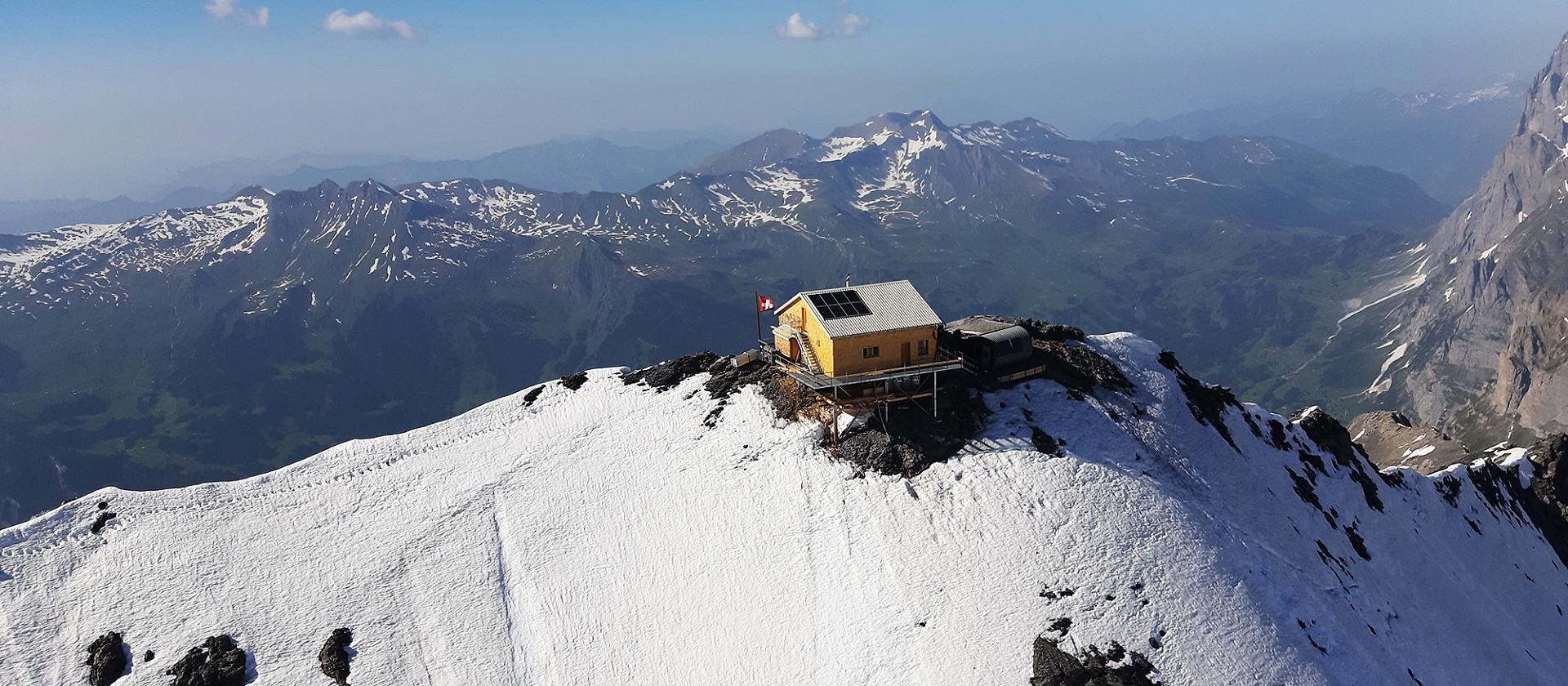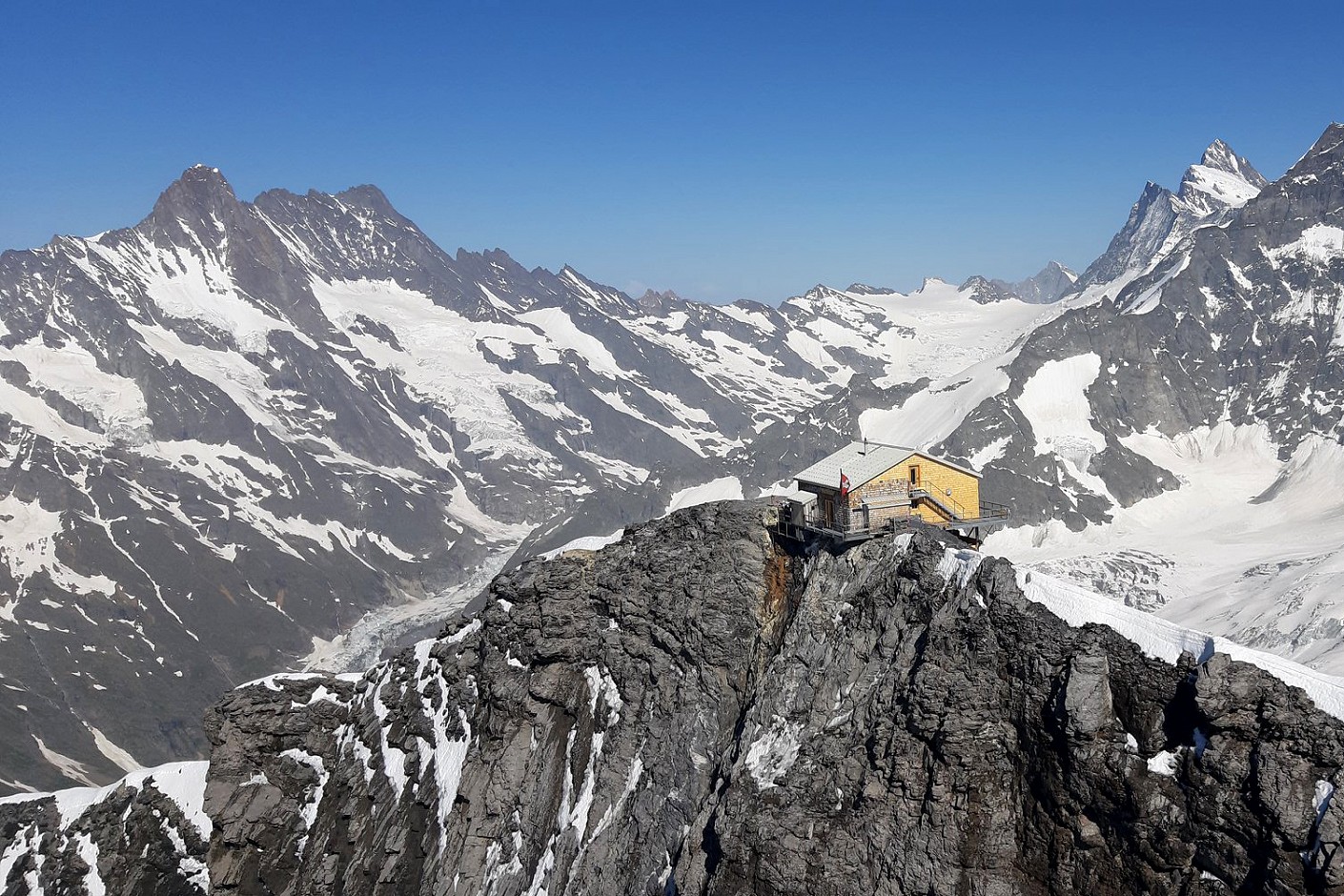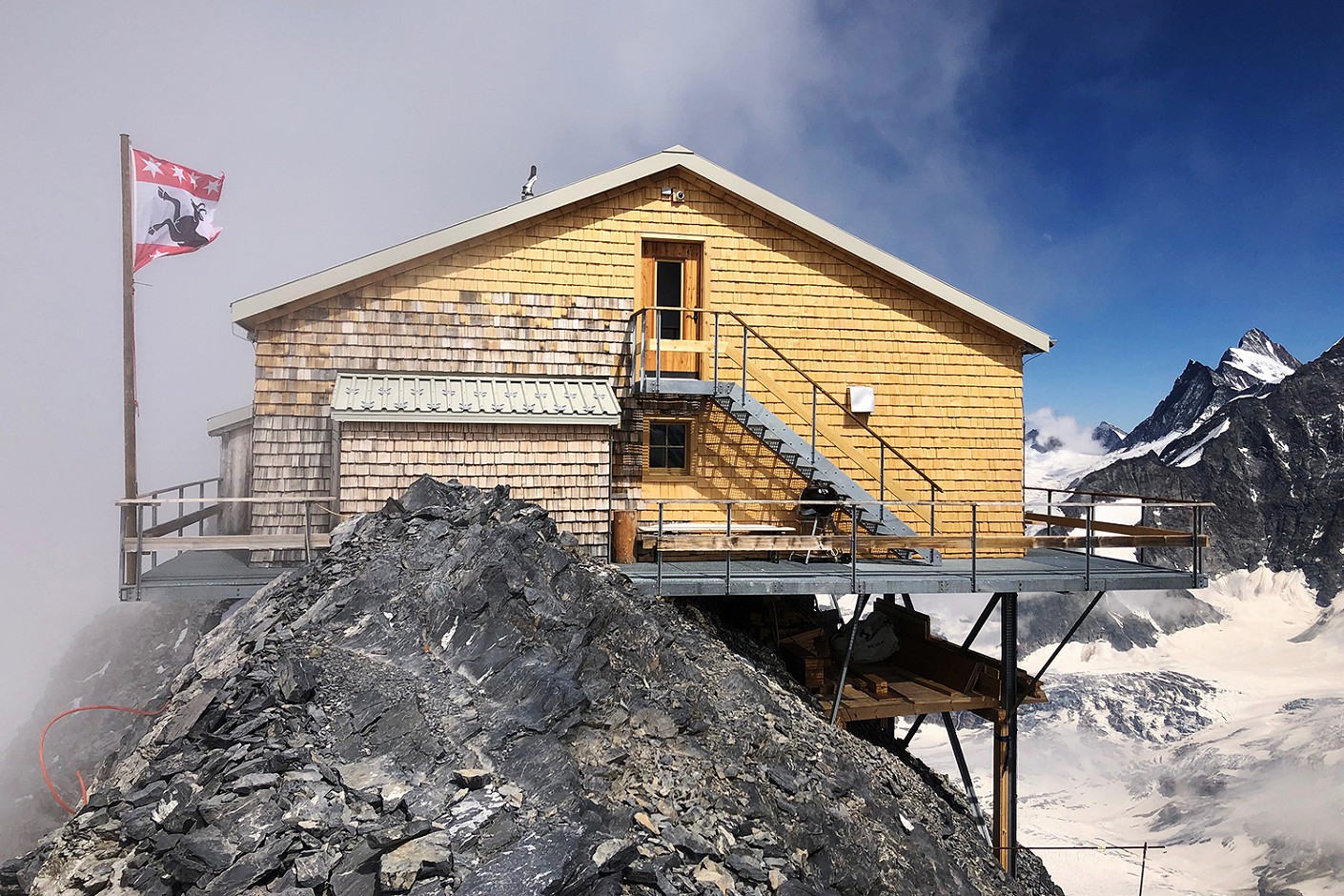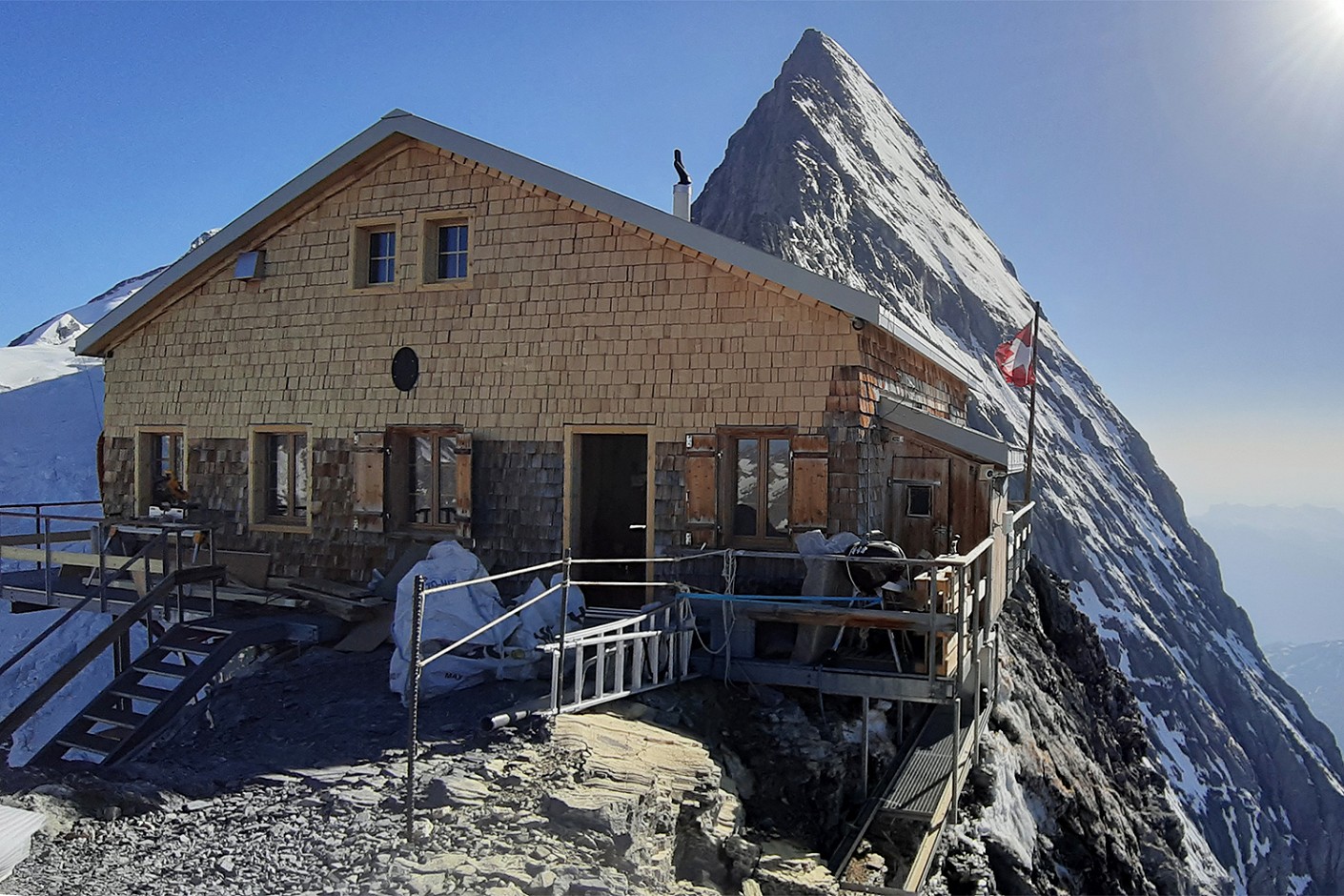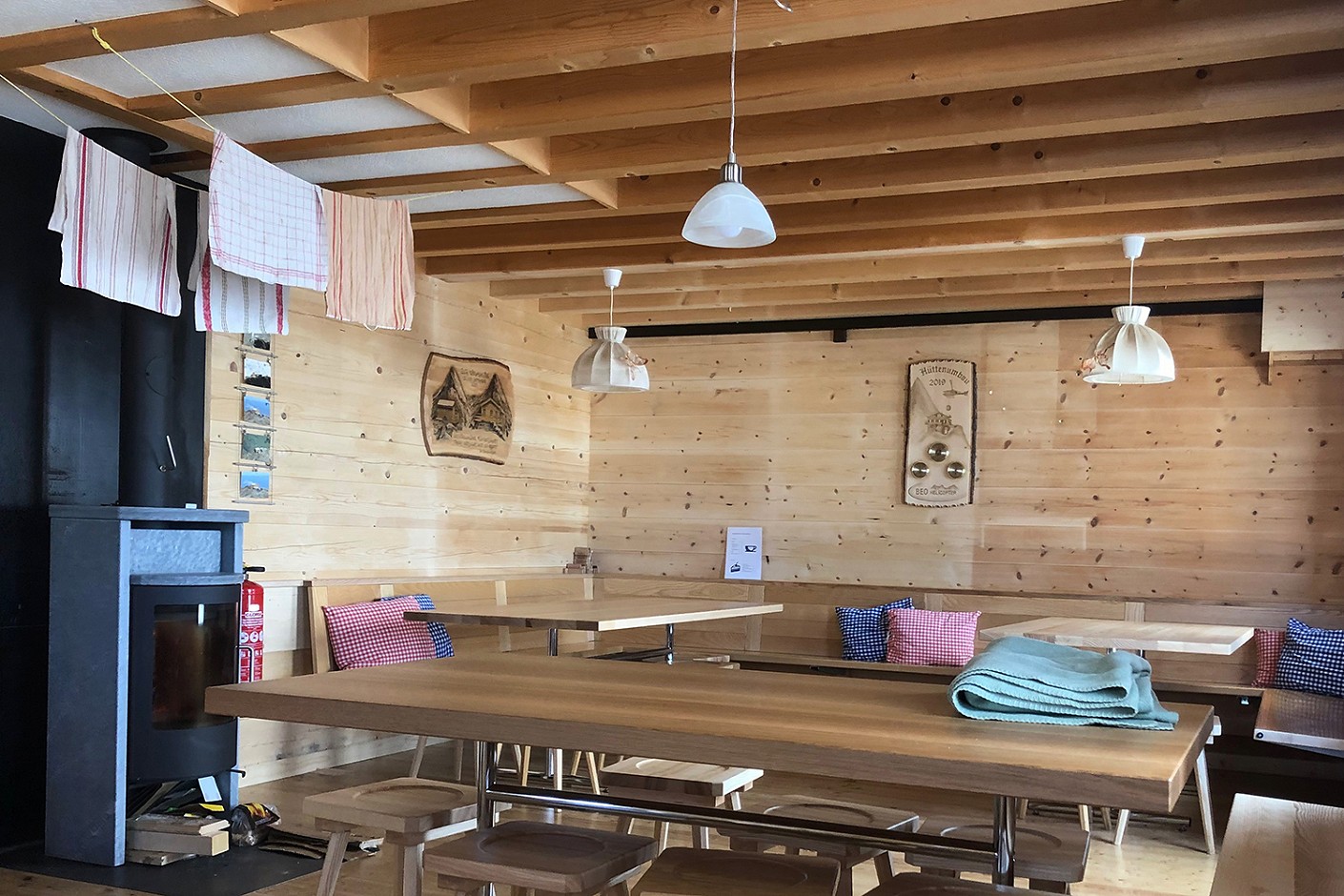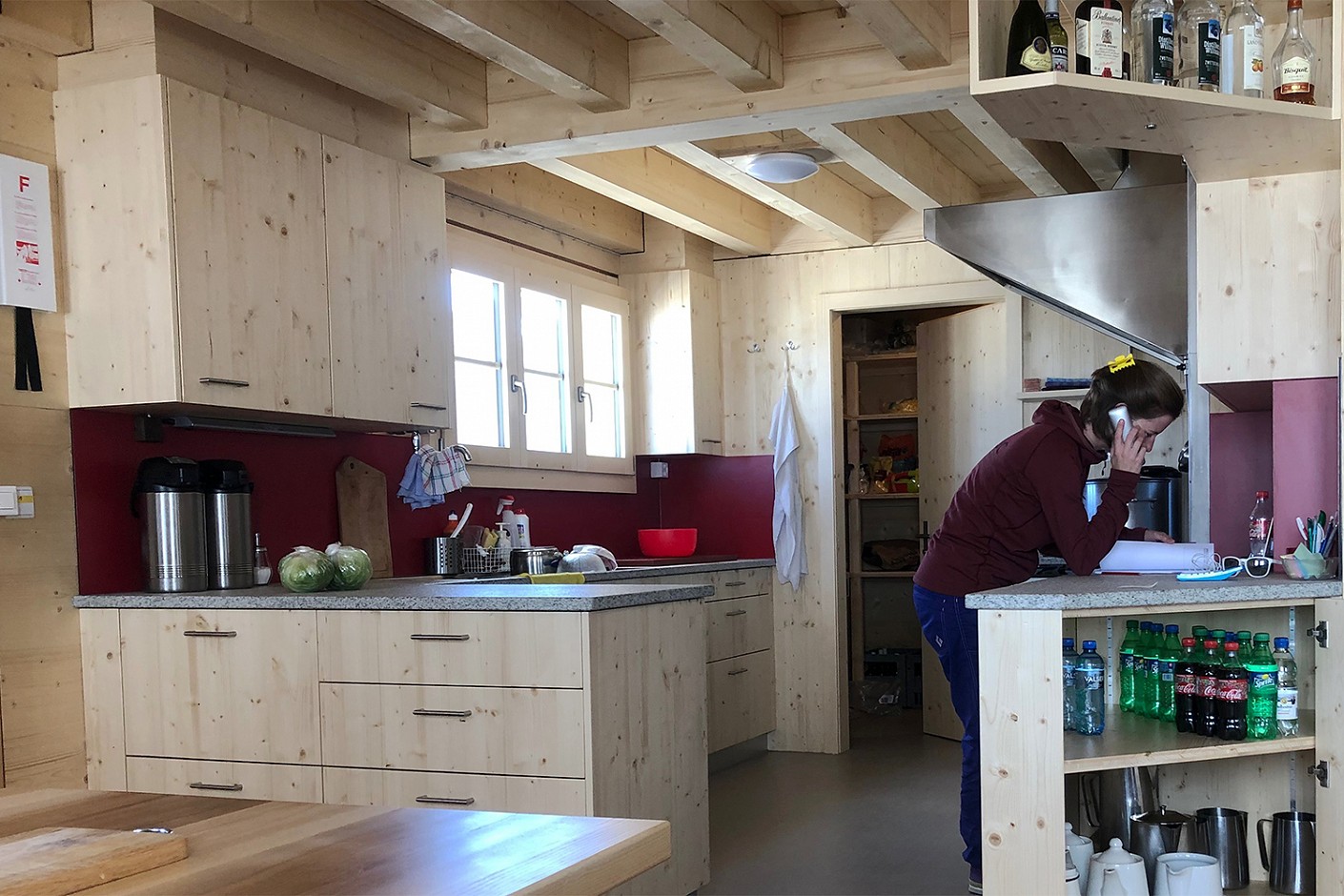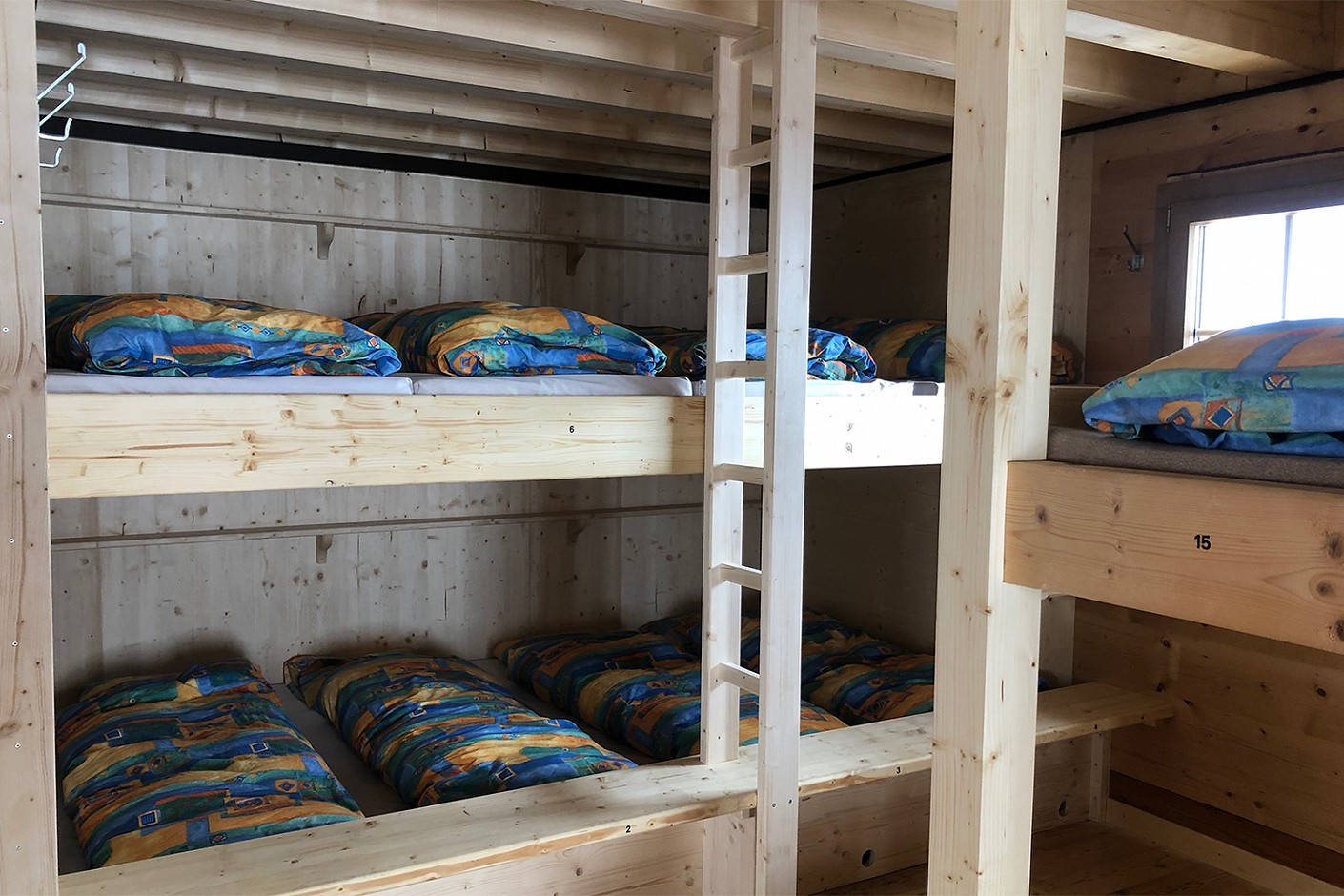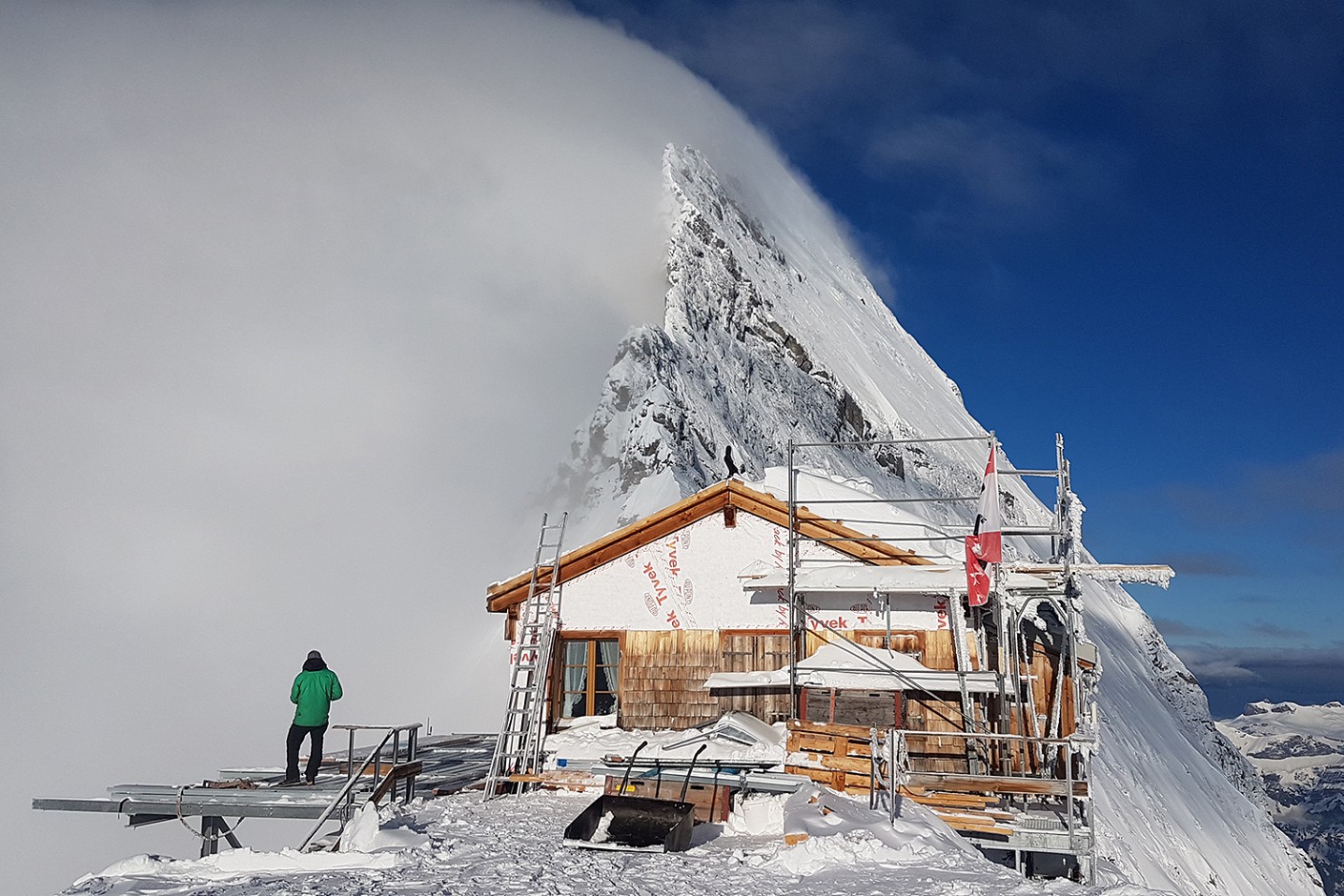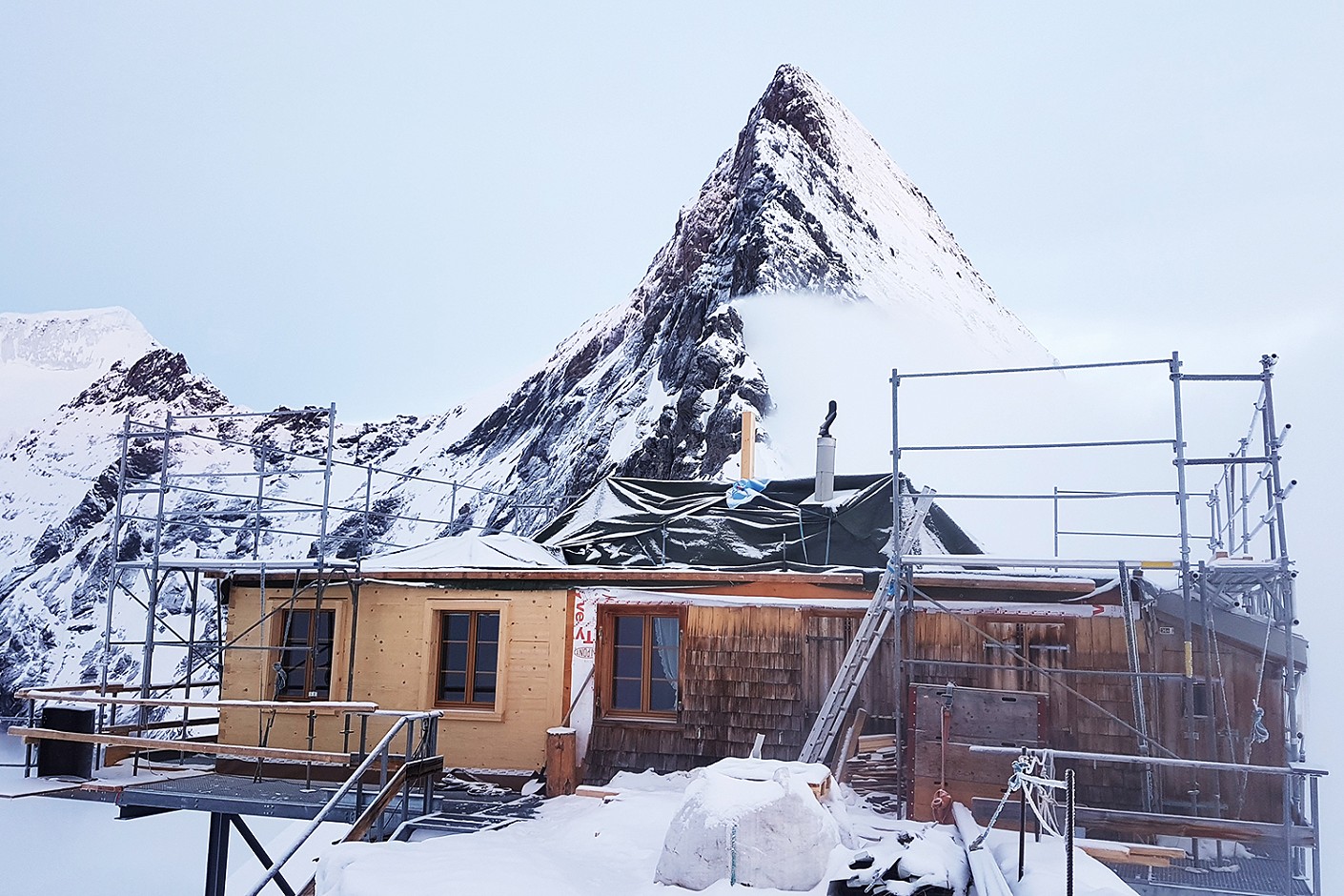The Mittellegi hut
Facts & Figures
- 5'000 liter water tank
- 3'355 m a.s.l.
- Opened in 1924
- 1'000 overnight stays per season on average
- 38 beds
- 1 gas stove
- 1 gas oven
- 4 hotplates
- 0 dishwashers
Mountain climbing makes you thirsty and hungry
We will be happy to spoil you with delicious delicacies from the small daily menu and refreshing drinks. A Mittellegi-Plättli for a snack, a piece of Meli's Schoggichueche or would you prefer an Eiger-Rösti after the ascent from the Ostegghütte? You certainly don't have to go hungry with us.
We source our products from local and regional suppliers and cook as freshly as possible under the given circumstances.
Ownership
The Mittellegi Hut is a private hut and belongs to the Grindelwald Mountain Guide Association. Here you can find out interesting facts about the 125-year-old association and the history of mountain guides in Grindelwald.
History
Mountaineers have found shelter in the Mittellegihütte for almost 100 years. Immerse yourself in history and learn how the hut was built on such an exposed site.
First ascent of the Mittellegi Ridge in 1921
Even before the construction of the Jungfrau Railway, the Mittellegi Ridge was climbed in 1885 by Alexander Burgener from the Valais. The ascent always failed at the big upswing, where today a fixed rope facilitates the ascent. It is astonishing that it took another 16 years after the Eigergletscher station was opened before the first ascent was made. An afternoon train brought the Japanese Yuko Maki and the three mountain guides Fritz Amatter (he had also climbed the ridge on the descent), Fritz Steuri and Samuel Brawand to the Ice Sea. From there, the four reached their night camp at about 3500 metres, a little further up the ridge than the hut stands today. On 10 September, they reached the summit after taking seven hours just for the big climb. Today, a well-rehearsed rope team needs three to four hours for the ascent from the hut to the summit.
History of the Mittellegi Ridge
First Mittellegi Hut 1924
Only three years after the first ascent of the ridge, the Mittellegi Hut was built on it. Thanks to a donation of 10,000 francs from the Japanese Yuko Maki (one of the first climbers), the Grindelwald guides were able to build the hut with 16 sleeping places, which eventually cost 16,000 francs. The building material was transported by sledge from the Eismeer station over the Challifirn to the foot of the rocks in the fall line of the building site. From there, the material was hauled up 300 metres to the construction site by a simple wire ropeway. In 1986, a steel bivouac tube was placed a few metres down the ridge from the hut, providing space for another 14 people and for firewood.
New hut 2001
After 77 years, the first Mittellegi hut was replaced by a new hut in 2001. The old hut is now located below the Eigergletscher station and can be visited there as a small mountaineering museum. The new hut with 40 sleeping places has been in operation since 2002. Since 1995, the Mittellegi Hut has been run by women, as has traditionally always been the case. In the summer of the century in 2003, more than 700 climbers spent the night in the hut and then climbed the Mittellegi Ridge.
Hut renovation 2019
The Grindelwald Mountain Guide Association has met the increasing demands of mountaineers, improved comfort and optimised work processes. With the extension of the hut, there is also a seating area in the hut for every sleeping place. Meals can thus be served in one go, and in bad weather all guests can find a place in the lounge. The kitchen has enough storage space to prepare meals. The paths to the toilets have been optimised and shortened. The hut warden now has her own room and a place to retreat to with larger storage space for equipment. The number of beds was deliberately not increased, so there will not be more climbers on the Mittellegigrat, the maximum number of 38 climbers will not be exceeded. The new hut was ceremoniously opened on 29 June 2019. Thanks to the great commitment of club members and craftsmen, as well as the broad support of the population and the authorities, the project was completed on schedule.
